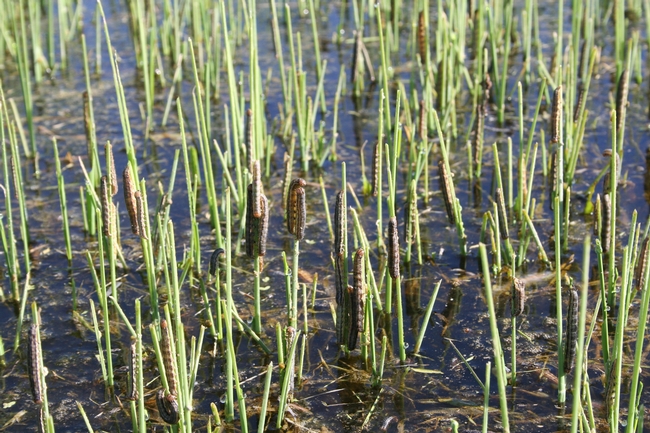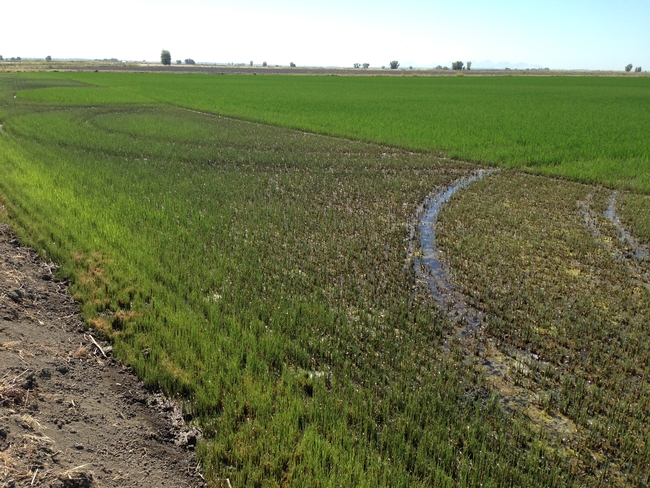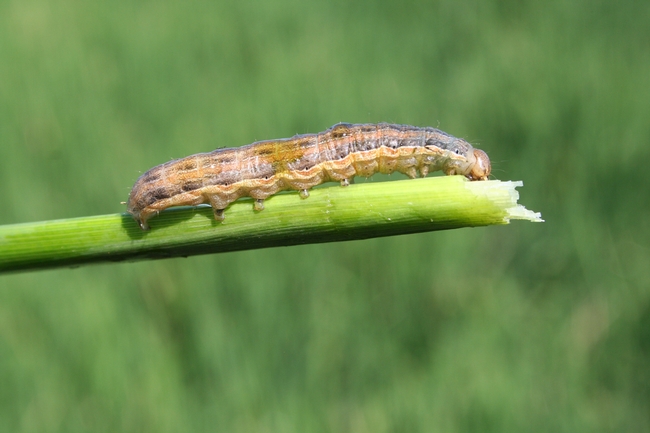
Posts Tagged: armyworm
Monitoring armyworms in rice helps reduce damage
Armyworms can be a serious pest in rice. The worms can eat the rice foliate or panicles, and cause yield reductions.
In 2015, a severe outbreak of armyworms caught rice growers by surprise, resulting in yield losses. In a 2018 survey conducted by UC Cooperative Extension, rice growers reported average yield losses in 2015 ranging from 4% to 12%. Since UCCE began a monitoring program in 2016, rice losses to armyworms have been rare, according to Luis Espino, UC Cooperative Extension rice farming systems advisor in Butte and Glenn counties.
To safeguard the rice crop against the pests, UCCE began conducting areawide monitoring of armyworms in 2016 using pheromone traps that attract the moths as they fly around rice fields. The traps are set up in 15 locations of the Sacramento Valley, from Richvale to Knights Landing, and in three sites in the Delta, covering most of the rice production area of California. The traps were set up early in the season and checked weekly until fields are ready to harvest.
“Moth numbers are delivered to more than 1,500 growers and crop consultants weekly via email, so they have a warning system to know when populations are increasing and when to start scouting closely,” Espino said.
“Treatments are not always needed, but armyworm damage can occur quickly and monitoring needs to be increased during the periods of peak moth flight,” he said. During periods of peak flight, the UCCE advisors provide growers with information on how to decide if a treatment is needed.
The information from the armyworm monitoring network, together with efforts by the rice industry to register insecticides that are effective at controlling armyworms, has resulted in better control of armyworms and less yield losses.
“In 2017 and 2018, I'd say yield loss due to armyworms was rare, and probably only happened in a couple of cases,” Espino said. “It's hard to give you hard numbers, but I'd say in 2017 and 2018, yield losses have been reduced to a minimum.”
Armyworms on the March
Interesting farm call this morning. A strawberry grower near Watsonville reported a large group of worms (caterpillars) migrating north out of the mixed cover crop including barley and mustard.
These worms were identified by our new UCCE entomologist Alejandro del Pozo as being a species of armyworm, for which this sort of behavior is not unusual. One distinct characteristic to ID these worms is the ‘Y' shaped suture on their forehead. For instance, the beet armyworm,Spodoptera exigua, could be a problem in strawberries when high infestations are left unmanaged. You could read more about the beet armyworm as pest of strawberries on the UCIPM guidelines at http://ipm.ucanr.edu/PMG/r734300611.html
Knowing that these creatures do feed on strawberries, the advice to the grower is to mow and disk the cover crop to destroy the majority of these worms. Yes, the grower is forfeiting some of the benefit of the cover crop he expected to keep going until the end of August, but the risk to his strawberry crop of this large population of armyworms is greater.
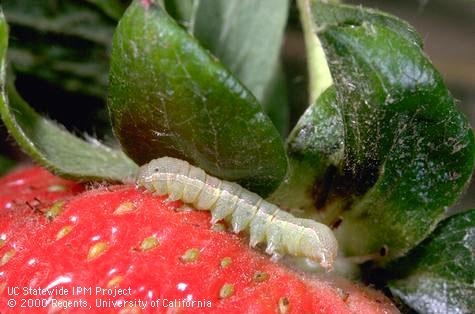
Armyworm on strawberry

Armyworm egg cluster. Note that it occurs as a mass.
Have a Rice Day! (Except for the Armyworms)
It's a day that rice growers look forward to. Bugs, not so much. Because they're...
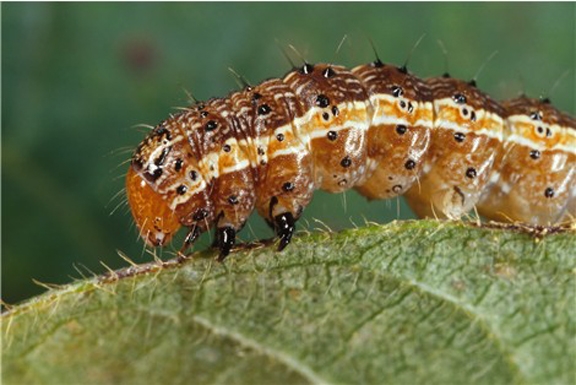
Fall armyworm, Spodoptera frugiperda, is a pest of rice. (Photo courtesy of Wikipedia: Canadian Biodiversity Information Facility)

